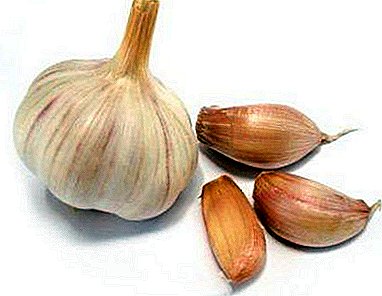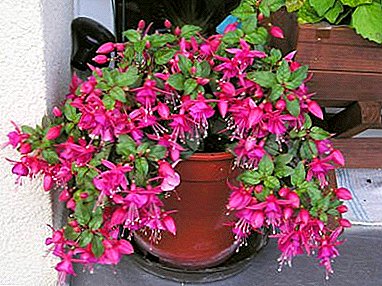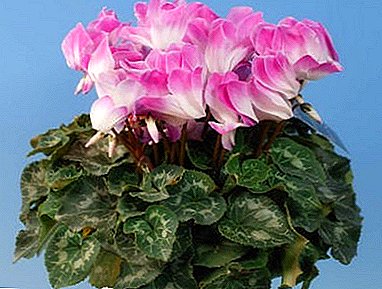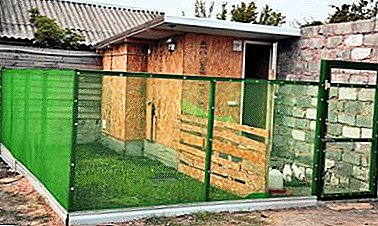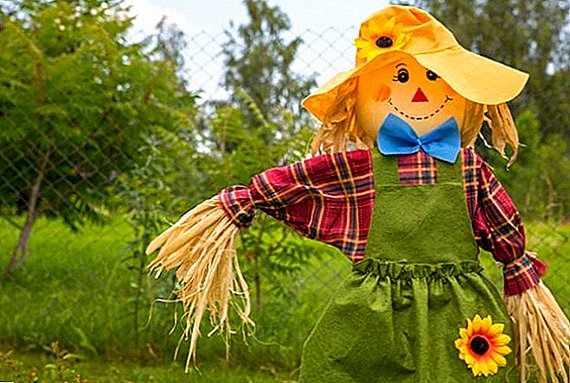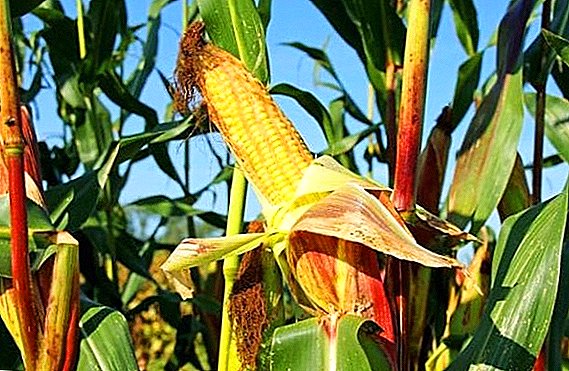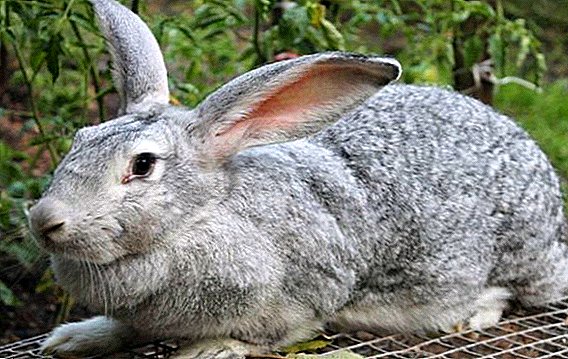 Artificial insemination has many positive aspects, making it possible to increase the efficiency of reproduction, as well as the industrial value of the future young.
Artificial insemination has many positive aspects, making it possible to increase the efficiency of reproduction, as well as the industrial value of the future young.
However, few livestock farms appreciated the importance of this procedure.
Meanwhile, artificial insemination is much better than natural.
Learn more about it using such common animals as rabbits.
Benefits of artificial insemination
Artificial insemination of domestic animal species is not popular in the CIS countries, but in European countries this process increases its scale every year. Over the past few years, a number of large centers have been created abroad, developing various methods of non-traditional breeding in agriculture.  The largest number of them is concentrated in the territory of Hungary, Spain, Italy and France.
The largest number of them is concentrated in the territory of Hungary, Spain, Italy and France.
Did you know? The first who actively practiced artificial insemination of animals, are the ancient Assyrians. Even a thousand years before our era, they in this way actively bred local horse breeds.
The main advantages of the method compared to traditional insemination:
- high efficiency, fertilization of females reaches about 90%;
- the ability to obtain a stable offspring due to the minimum number of males;
- low cost, the total cost of the procedure is much lower than the content of many male fertilizers;
- the ability to withdraw only production-valuable and most viable individuals;
- the process allows to fertilize several dozen females simultaneously;
- Constant updating of the genetic material in the rabbit is achieved without additional costs for new individuals;
- artificial insemination contributes to the breeding of animals that are genetically resistant to various ailments;
- increasing the overall immunity of livestock;
- artificial binding allows you to create an uninterrupted process for obtaining products, regardless of the seasons and other factors;
- such fertilization makes it possible to get the maximum profit at minimum cost.
Find out when it is possible to let the rabbit on the mating and how it should take place around the street during a street maintenance.
Stages of artificial knitting
The procedure for such insemination consists of just a few steps. First of all, the males should be properly selected biomaterial, then properly prepare it and introduce into the body of the female.  It does not require complex equipment and expensive laboratory, but without careful observance of all the rules, it will not be easy to achieve healthy offspring.
It does not require complex equipment and expensive laboratory, but without careful observance of all the rules, it will not be easy to achieve healthy offspring.
Taking the biomaterial from the male
Taking the biomaterial involves removing the sperm from the male body naturally. On the majority of large farms, special fertilization centers are created for this, but for domestic purposes it is more expedient to acquire a special cage with an optimal space for 2-3 individuals (about 1.5-2 cubic meters).
The procedure also provides for the presence of a special container for the collection of physiological fluids, consisting of a central capsule and an outer shell made of latex or rubber, resembling in shape a rabbit's vagina.
As donors, only large and healthy individuals are selected, without any pathologies, chronic ailments, as well as all kinds of infections. Regardless of the production needs, the males must have a developed musculature, as well as a dense and uniform coat.
Important! As donors, it is best to select the most calm and docile individuals, since taking a biomaterial often causes severe discomfort in rabbits, which directly affects the amount of biomaterial.
Best of all, if the donors are young males at the age of 1-4 years. In this case, the greatest fertilizing ability of the selected biomaterial is achieved (up to 50 females from one portion), as well as the maximum breeding (up to 12 cubs).  The main stages of biomaterial sampling in males:
The main stages of biomaterial sampling in males:
- Preliminary preparation. At this stage, they inspect all the necessary (cell, container for biomaterial collection, etc.) for structural integrity, and also sterilize the container for sperm collection using 70% alcohol solution or 1-2% formalin solution.
- Replanting the female in the cage to the male. In the period of active reproduction, individuals of the opposite sex act for rabbits as a strong stimulus that activates the reproductive system to produce seed material, therefore, a rabbit cannot be dispensed with the material intake. The rabbit in the cage must be firmly fixed with special wide belts, otherwise the fence will become almost impossible. A container for the collection of biomaterial should be installed between the female's hind legs in close proximity to the genitals.
- Selection of seed material. After all the training, the male is allowed to the female. When the male begins to cage, you need to carefully substitute the container, and when the male leaves the female, carefully remove it, so as not to shed the resulting seed. From the first time, it is rather difficult to take material intake, so it is necessary to practice several times before the main fence.
Important! To improve the safety of spermatozoa and increase the efficiency of sampling, the container must first be slightly heated to a temperature of about 40 ° C.
Laboratory research of biomaterial
Laboratory testing of selected samples is the most important step to ensure successful artificial insemination of rabbits. For these purposes, conduct a comprehensive analysis of the fluid, the main of which is microscopic examination.  It directly indicates the quality of the selected seed, but first, each sample is evaluated visually:
It directly indicates the quality of the selected seed, but first, each sample is evaluated visually:
- High-quality material has a viscous consistency of a gray-white or yellow-gray shade. If there are other impurities, the material is discarded.
- A suitable seed should have a specific, persistent odor. Samples with a sharp unpleasant odor (especially rotten), are rejected, as this indicates pathologies in the reproductive system, which will directly affect future offspring.
After a visual assessment, a small amount of microscopy fluid is taken.
At this stage, analyze:
- sperm motility and their morphological features;
- the number of healthy and damaged cells;
- the presence of any impurities in the seminal fluid;
- sperm liquefaction time;
- titer (number of cells in 1 ml of liquid).
A healthy seed is characterized by the following features:
- high concentration of cells in 1 ml - not less than 300 million;
- morphological uniformity - the number of cells with pathologies should not exceed 5%;
- high survivability - the number of viable cells should not be below 80%;
- high cell activity - not less than 60% of spermatozoa should show active rectilinear and progressive movement;
- rapid dilution of the seed - no more than 60 minutes;
- low concentration in the seminal fluid of leukocytes - no more than 1%;
- absence of semen agglutination of cells, as well as the presence of spermatophages and red blood cells.
 Research under a microscope is carried out using a set of glass for microscopy on special equipment, the so-called "Morozov table". This device provides for heating the test liquid and its environment to optimal temperature conditions (38-40 ° C).
Research under a microscope is carried out using a set of glass for microscopy on special equipment, the so-called "Morozov table". This device provides for heating the test liquid and its environment to optimal temperature conditions (38-40 ° C).The liquid should fill all the space between the glasses, facilitating the free movement of cells in the volume of liquid.
Important! Microscopy is not recommended without the Morozov table. Low temperatures reduce the activity of sperm, which may adversely affect the overall assessment of the quality of biomaterial.
Introduction directly into the female uterus
After selection, sorting and careful analysis, selected specimens of the seed are ready for introduction into the body of females. If the introduction of seminal fluid is planned to take place in a few days, it is transferred to a special container and stored in a refrigerator at a temperature of 2-4 ° C.
If the material needs to be moved a long distance, the sperm is transported in a so-called "Dewar vessel". It is a container with internal cavities of the type of thermos.
Small pieces of ice fall asleep in the cavity, which allow us to reach the optimum temperature for the preservation of the biomaterial for 12 hours.  Immediately before the introduction of seminal fluids, a preliminary dilution of the concentrated seed is carried out.
Immediately before the introduction of seminal fluids, a preliminary dilution of the concentrated seed is carried out.
Depending on its thickness, the following dilution of liquids is used:
- maximum - 1: 9;
- the average is 1: 7;
- the minimum is 1: 4.
For breeding use special preservative solutions that have a stimulating effect on germ cells. The most popular among them are the Shetsu solution and Bautina nutrient medium.
To prepare the solution according to Schetsu, you need to dissolve in 100 ml of pure distilled water:
- raw chicken yolk - 10 ml;
- dry milk - 10 g;
- a solution of glycerin with yolk - 2 ml;
- glucose solution with yolk - 5 ml;
- sodium citrate solution with yolk - 3 ml.
Nutritional environment Bautina consists of:
- pure distilled water - 100 ml;
- raw chicken yolk - 5 ml;
- sodium citrate - 0.72 g;
- glycocol - 1.82 g

Artificial insemination consists of the following steps:
- Insemination syringes and other equipment are thoroughly disinfected with 70% alcohol solution or 2% formalin solution.
- Among several females, the individual most ready for mating is selected. The main signs of the onset of ovulation are redness and swelling of the external genital organs, refusal of food and increased excitability.
- The female is gently laid on a flat, immovable surface with the coccyx down and fixed with the help of wide straps of leather or other materials. In this case, the hind legs must be firmly fixed.
- With the help of a small tampon soaked in furatsilin solution, disinfection of the external part of the female genitals is performed.
- With a clean and disinfected syringe, a small amount of diluted seed is collected (0.2-0.3 ml), its tip is cut at the edge and bent at an angle of 45 °. To improve the efficiency of the process, seminal fluid is preheated in a water bath to a temperature of 40 ° C.
- After preliminary preparations, you can begin to enter the seed. To do this, the syringe is gently inserted into the female's genitals and sharply injected with liquid. After that, the syringe abruptly, but gently reach out, and the female is sent to an individual cage.
Did you know? The founder of modern methods of artificial insemination of animals is considered a Soviet scientist. I. I. Ivanov, who at the beginning of the twentieth century for the first time conducted large-scale research in this industry, and also carried out mass artificial insemination of various animal species.
Care for the rabbit after insemination
Pregnancy in rabbits lasts for 30-32 days, and for all this period the fertilized female needs to create special conditions for the safe formation of cubs.  First of all, we should not forget that pregnancy seriously affects emotional stability and the behavior of animals, therefore a quiet and peaceful atmosphere should be created in the rabbit.
First of all, we should not forget that pregnancy seriously affects emotional stability and the behavior of animals, therefore a quiet and peaceful atmosphere should be created in the rabbit.
It will be useful for you to know how long it lasts and how to determine the rabbit's pregnancy.
For this, the female needs to be transplanted into a special, previously prepared individual cage, with a cube volume of at least 0.8 m, away from related individuals and other animals.
During pregnancy, the rabbit's body needs a huge amount of additional nutrients. Therefore, after the pregnancy is detected, the female must necessarily be provided with an unlimited amount of high vitamin and nutritious food, as well as free access to fresh water. Otherwise, a poor diet can cause miscarriages or abnormalities in the offspring.
Daily nutrition of a pregnant rabbit must include:
- fruits;
- vegetables;
- roughage;
- grain feeds (oats, barley, corn, legumes, etc.).
To improve the condition of the body, it is also recommended to use special vitamin premixes for pregnant animals, however, such preparations should be used only after prior consultation with a veterinarian.  Approximately 7-10 days before the expected date of birth of the offspring, the female should be provided with a nest. Its role is performed by a small wooden box with a hole. The bottom of the nest must be laid out with a soft bed of straw or other materials.
Approximately 7-10 days before the expected date of birth of the offspring, the female should be provided with a nest. Its role is performed by a small wooden box with a hole. The bottom of the nest must be laid out with a soft bed of straw or other materials.
Do not forget about regular wet cleaning in the cage. The pregnant organism is especially subject to defeats by various infections and pests, therefore it is necessary to clean the cell regularly. Cleaning from feces should be carried out at least 2 times a week, the removal of residues of old food should be practiced daily.
Did you know? Since the mid-twentieth century, rabbits in Australia are considered serious pests. After migration with the First Fleet ships, these animals not only massively spread across the continent as a wild species, but also led to the irretrievable disappearance of some native animal species.
Each cleaning of the cage must end with mandatory disinfection. First, special disinfecting solutions must be thoroughly treated all surfaces and the contents of the cell, and then using a blowtorch or other devices to burn for several seconds all non-combustible and poorly burning elements, including the feeding trough and the trough.
Most often, disinfectant solutions are prepared on the basis of the following drugs:
- Bromosept-50;
- Glutex;
- Virocid;
- Virkon C;
- Ecocide C.
 Working fluids are prepared immediately before use, according to the manufacturer's instructions. Replace the above drugs can be pharmacy iodine. To do this, it is prepared from 5% aqueous solutions based on boiled or pure distilled water.
Working fluids are prepared immediately before use, according to the manufacturer's instructions. Replace the above drugs can be pharmacy iodine. To do this, it is prepared from 5% aqueous solutions based on boiled or pure distilled water.Artificial insemination is a modern and popular procedure in animal husbandry that allows you to establish an uninterrupted process for the production of rabbit products, regardless of the size of the farm.
In addition, artificial insemination makes it possible to achieve high-quality products at minimal cost. This not only increases the total profit from breeding animals, but also makes it possible to avoid unforeseen expenses.


